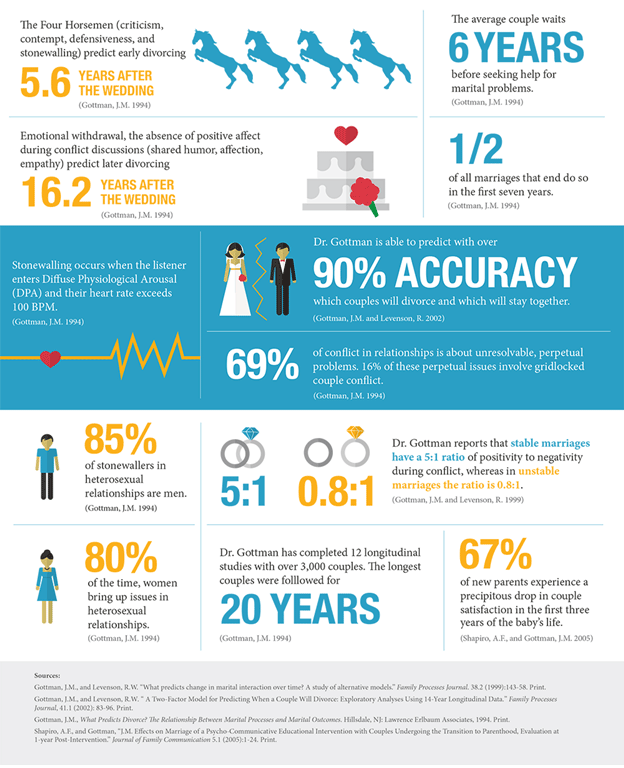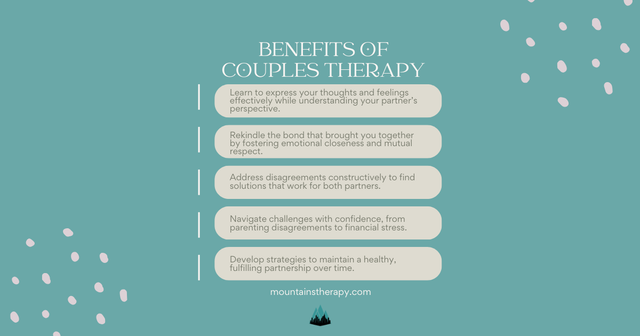The 6-Minute Rule for Aim Point Counseling
The 6-Minute Rule for Aim Point Counseling
Blog Article
The 45-Second Trick For Aim Point Counseling
Table of ContentsNot known Facts About Aim Point CounselingHow Aim Point Counseling can Save You Time, Stress, and Money.Aim Point Counseling Fundamentals ExplainedFascination About Aim Point CounselingFacts About Aim Point Counseling RevealedWhat Does Aim Point Counseling Mean?
The longitudinal layout entails a pre-treatment survey and 2 follow-up studies at 3- and 12-months post-intervention. The research study is established in eight Relationships Australia Victoria centres, across urbane, outer suburban areas, and regional/rural websites. Relationships Australia, a non-government organisation, is the biggest service provider of pair counselling and connection solutions in Australia.
These high rates of connection failure have been continually linked with adverse health and wellness repercussions for both adults and children following divorce/separation.
See This Report on Aim Point Counseling
The results of separation and splitting up can be damaging, research suggests that high partnership discord in intact pairs is likewise most likely to have negative results.
Study to day has actually determined both couple and private elements that may add to connection dissonance. These consist of connection contentment and commitment at the pair degree, and anxiety at the private level.
The Ultimate Guide To Aim Point Counseling
While many research studies show enhancements in partnership fulfillment complying with couple counselling, they are limited by the samples and actions used, greatly short-term follow-up time frames, and evaluations that do not account for the dyadic nature of pair data., is one more commonly checked out connection end result.
To sum up, research study suggests that couple-specific variables in addition to private aspects may anticipate the end results of pair coaching and partnership solutions. The causal instructions of these partnerships, nonetheless, is less clear. These monitorings are very important, since, to justify and guide the application of connection services such as pair therapy, empirical proof has to discover both the results of connection services and the factors that forecast effective treatment.
, at least in some European nations.

We currently recognize little about the profiles of couples that seek connection education compared to those who look for partnership counselling, or the results of these programs. Anecdotal proof recommends that there might be considerable distress among at least some couples looking for partnership education and learning. Partnership education and learning programs vary from pair coaching as they are normally very structured, conducted in groups, and concentrate on a combination of 4 elements; understanding, responses, cognitive adjustment, and abilities training [45]
Aim Point Counseling for Beginners
Feedback entails participants finishing surveys regarding their relationship (e.g. measures of interpersonal troubles), and getting information on what their ratings indicate. Cognitive-behavioural strategies promote transforming cognitions to help with favorable connections. These might consist of promoting practical attributions/expectations around negative companion practices [46] Lastly, in skills training, couples participate in talks or discussions on connection skills, and practice these during facilitator-led activities [ 45]
These effects have lingered for approximately 4 years in some researches [47] These meta-analyses highlight constraints in the existing literary works on partnership education and learning. Specifically, most of research studies entailed couples from upper socio-economic histories that were not experiencing high connection dissonance [47,48] This example profile might not stand for customers that usually present for partnership education.
Rumored Buzz on Aim Point Counseling

Extremely little study has examined the comparative benefits of couple coaching and relationship education programs. As customers are likely to self-select into these service types, it is not clear whether characteristic relationship distress accounts present to every service type, or without a doubt whether there is a communication between providing profile, service kind and outcome.
(https://pubhtml5.com/homepage/eldon/)
Therefore, we have actually included a 12-month follow-up to determine longer-term patterns and effects. The research makes use of a number of standard result procedures given that some prior examinations have actually been criticised for their absence of standardised evaluation [50] The usage of analytical evaluations that presume self-reliance of information, such as t-tests, or ANOVAs, has been common in previous researches [ male counselor 44,49]
We suggest to use multi-level statistical modelling procedures that manage for the inter-dependence of couple data to evaluate any type of therapy impacts. The particular goals of the ECC research are to: 1. Map accounts of customers seeking area agency-based pair therapy vs. connection enhancement programs in regards to socio-demographic and connection indications (such as connection contentment, partnership commitment, social troubles, and reasons for attending), in addition to health (such as clinical depression, basic well-being) and wellness solution use (eg.
2. Determine whether pair coaching and relationship education and learning solutions improve 3- and twelve-month end results for relationship fulfillment, commitment, and clinical depression, making use of statistical analyses appropriate to combine data. 3. Determine the family member payments of customer aspects (specific and couple) and therapy/education variables to end results at 3- and 12-months, and to sustainability of end results with time.
Getting The Aim Point Counseling To Work
Multi-level modelling to determine pre-post differences, regulating for dyadic (pair) degree. To add to the literary works examining the performance of community-based couple counselling. The outcomes will aid scientific decision-making in community-based connection service settings, and specialist training. 3. To establish the family member payments of client/couple and treatment factors to results at 3- and 12-months, and to sustainability of results with time.
Report this page